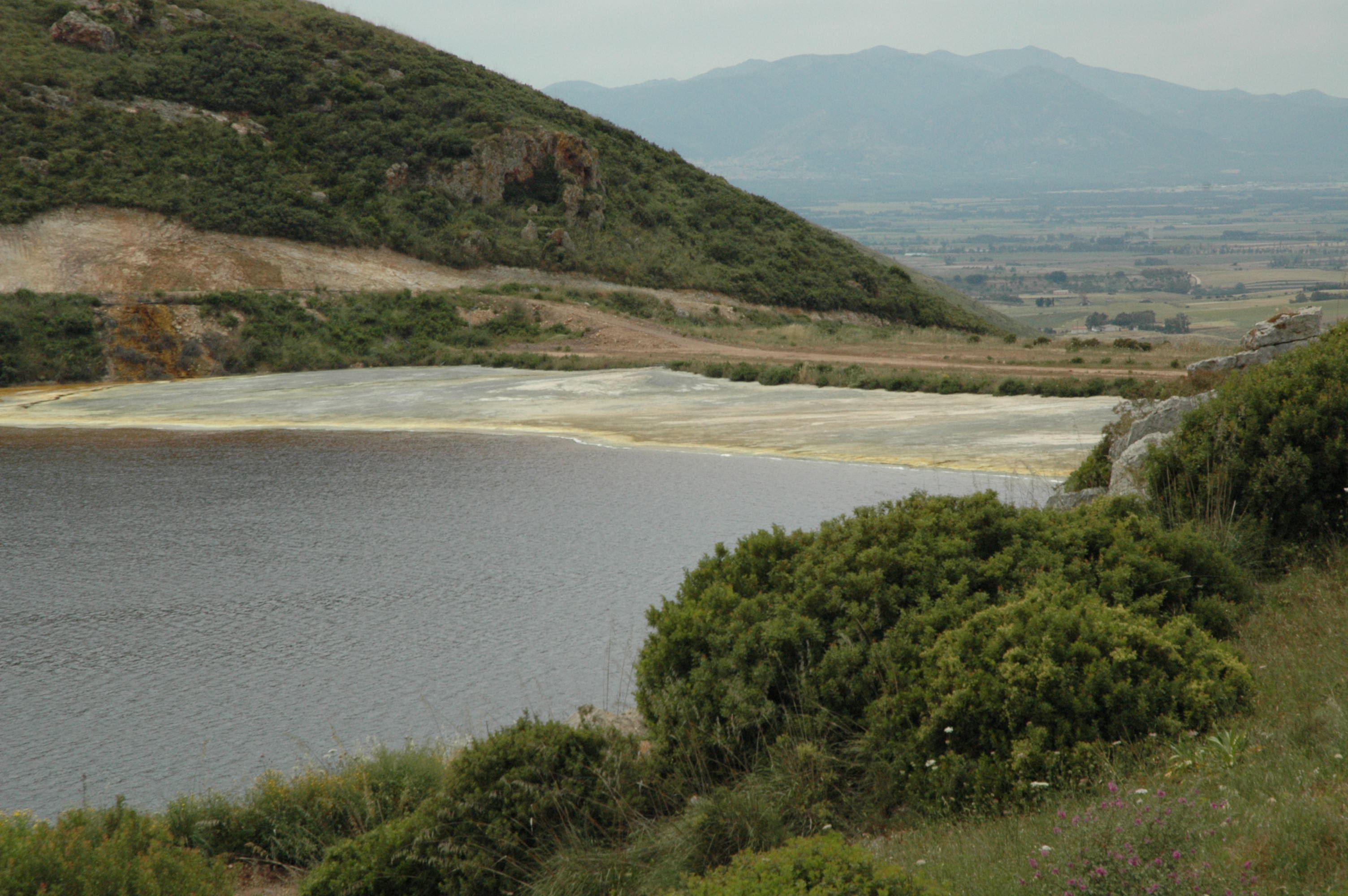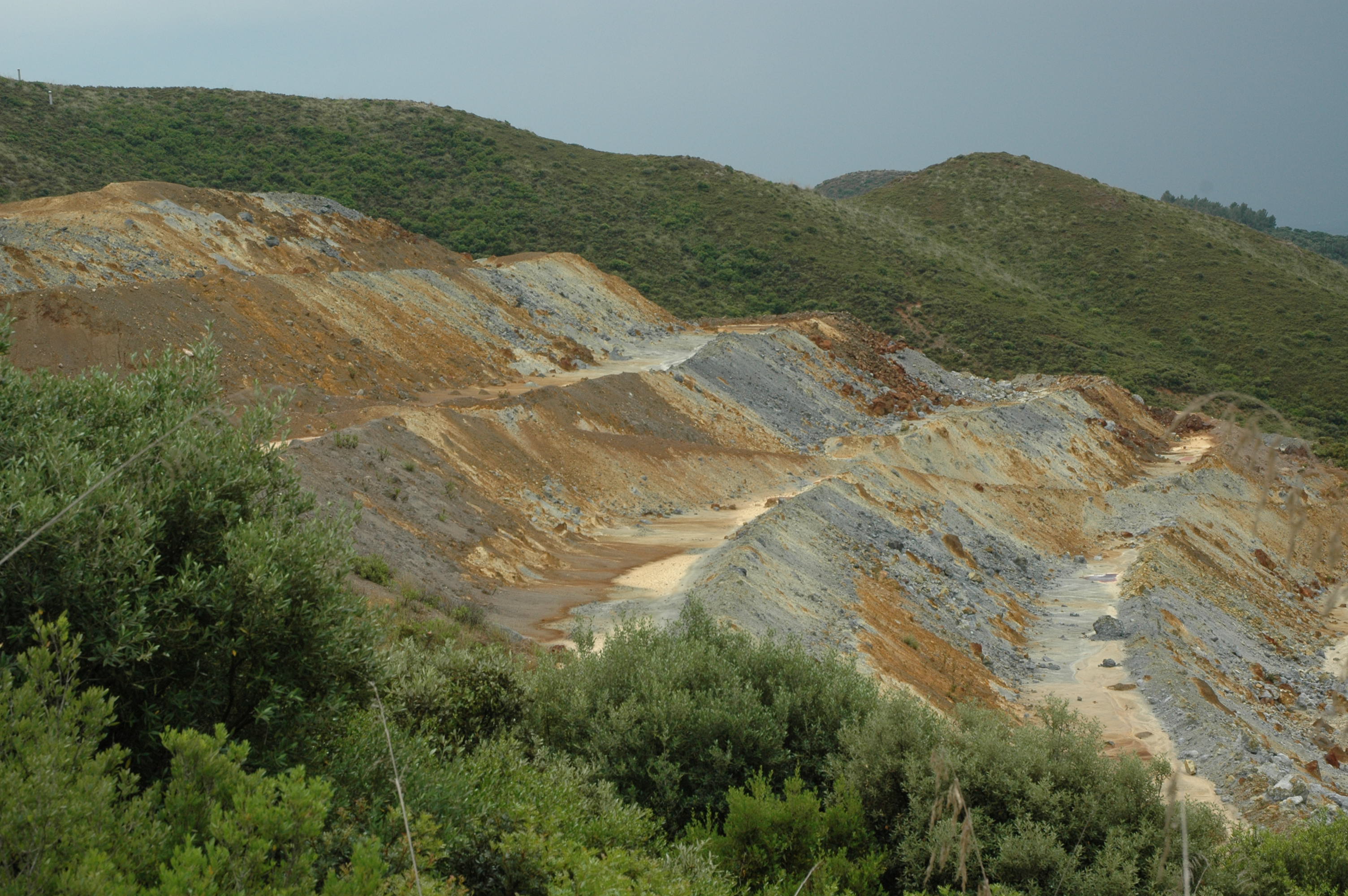Monday, September 17, 2012 11:27:10 PM

Augusta Resource Corporation is seeking government approvals to construct a massive open-pit copper mine and dump waste rock and mine tailings on more than 3,000 acres of the Coronado National Forest in the Santa Rita Mountains 35 miles south of Tucson.
The mine would be operated through Augusta’s wholly-owned subsidiary, Rosemont Copper Company.
Augusta, a Vancouver, British Columbia speculative mining company, has never operated a mine and has a very limited business history.
Five of the eight current members of Augusta’s board of directors, however, do a have mining history.
Between 2003 and 2007, these executives were on the board of directors of Sargold Resource Corporation. Sargold owned and operated an open-pit gold mine near the small farming village of Furtei in south-central Sardinia.
InvestigativeMEDIA reviewed Sargold’s publicly available business records and traveled to Sardinia and Vancouver to conduct interviews. The reporting lead to the video documentary “Cyanide Beach”.
InvestigativeMEDIA also prepared the following report on Sargold’s business history that includes a detailed analysis at the end of the historical narrative.
InvestigativeMEDIA offered to meet Augusta officials in Vancouver, but Augusta declined interview requests with the five current Augusta board members to discuss their actions as Sargold directors.
The history and analysis is annotated with links to Sargold’s press releases, regulatory disclosures, court records, Canadian mining claim reports, news articles and scientific studies on the unfolding environmental disaster left behind after the Sardinian gold mine was abandoned.
Sargold’s Sardinian Play
Sargold Resource Corporation (previously 3423786 Canada Inc., 5/1998; Augusta Corp., 7/1998; Canley Developments, 8/2001; Sargold, 7/2003) operated an unprofitable gold mine and held exploration rights for two gold mining claims in Sardinia, Italy between 2003 and 2007.
Sargold’s Board of Directors included five of the eight current directors of Augusta and one former Augusta board member.
Richard Warke
The common Sargold and Augusta directors include: Augusta Chairman Richard Warke, Augusta President and CEO Gil Clausen, and directors Donald B. Clark, Robert P. Wares, Christopher M. H. Jennings. Former Augusta director Michael A. Steeves also served on the Sargold board.
Sargold’s history provides the only example of how the majority of Augusta’s current board managed an active mining company in the immediate past.
Sargold’s corporate records and interviews with key officials in Canada and Italy familiar with Sargold’s operations reveals a troubling history that includes:
* Failure to provide accurate and timely information to shareholders.
* Failure to pay vendors.
* Misspending a Sardinian government loan.
* Evidence of a self-enrichment scheme to benefit its chairman.
* Evidence of insiders receiving excessive discounts on stock purchases.
* Issuing misleading press releases.
* Not disclosing in proxy statements that a Cayman Islands investment fund controlled more than 10 percent of the company between 2005 and 2007.
* Contributing to an ongoing environmental disaster in Sardinia.
Sargold’s Sardinian investment
Sargold’s primary asset was its Italian subsidiary, Sardinia Gold Mining, SPA (SGM).
In March 2003, Sargold, then known as Canley Developments, entered the Italian gold mining business through a joint venture with Australian-based Gold Mines of Sardinia. Gold Mines of Sardinia held a 90 percent interest in Sardinia Gold Mining, SPA.
In June 2003, Sargold signed a purchase agreement to buy 50 percent of GMS to take a 45 percent interest in Sardinia Gold Mining.
In early 2004, Sargold issued two press releases concerning Sardinia Gold Mining’s primary asset, the Furtei Gold Mine. The first release touted “significant increases in gold grade”; and the second announced discovery of a “substantially larger resource than was originally estimated”.
Donald Clark
In June 2004, Sargold announced plans to purchase the remaining 45 percent interest from the Australian company to up its stake in Sardinia Gold Mining to 90 percent. Progemisa, an Italian government mining research organization, owned the remaining 10 percent.
A month later, in July 2004, Sargold issued a press release hailing its drill exploration program that had discovered the “highest gold grades” to date at the Furtei mine.
Sargold closed the purchase in September 2004 and assumed control of Sardinia Gold Mining’s assets, including the Furtei open pit gold mine and exploration rights near the historic Sardinian town of Osilo.
Enter the hedge fund
In October 2004, RAB Special Situations, a Cayman Islands hedge fund, purchased 4 million units of Sargold in a private placement to take a 26 percent stake in the company. RAB Special Situations made additional major purchases through private placements in 2006 and 2007. Sargold did not repor RAB’s 10 percent or more share of the company’s stock in its annual proxy statements between 2005 and 2007.
In November 2004, Sargold issued another optimistic press release describing its “in-ground gold resources, hundreds of square kilometers of prime gold exploration ground, a permitted production facility and over ten years of detailed geological information.”
In early 2005, Sargold appointed Franco Cherchi president of Sardinia Gold Mining.
Robert Wares
This was a very high-profile appointment in Sardinia. Cherchi was a former president of Progemisa, the government-funded mineral resource management agency and Sargold’s minority partner in Sardinia Gold Mining. He was also involved in Sardinian regional politics and was a regional leader in the Left Democratic Party.
“Mr. Cherchi brings extensive experience in geology, administration and local politics to his new position,” Sargold noted in a Jan. 19, 2005 press release.
Furtei’s limited prospects
The Furtei gold mine, is located within a volcanic cinder cone near the small town of Furtei in Southern Sardinia.
The mine complex is also wedged into the middle of an important water and hydroelectric facility that serves southern Sardinia, including its capital, Cagliari.
The Sa Forada water/electric infrastructure includes the Sa Forada Dam and reservoir, underground pipelines, a hydro-electric power plant and a high-tension electricity power grid. The complex was constructed in the 1970s with European Union funding.
Sardinia Gold Mining began operations at the Furtei open pit mine in 1997.

Cyanide Beach
The Sa Forada Reservoir supplies drinking and irrigation water to southern Sardinia. Mining operations stripped away the earth next to the reservoir.
The Australians closed the mine in 2002 after all accessible oxide ore had been removed. About 138,000 ounces of gold were produced.
After assuming full control of Sardinia Gold Mining in 2004, Sargold refurbished the Furtei mine’s milling facilities. Between March and September 2007, Sargold produced 1,300 ounces of gold and silver from waste rock.
Sargold’s business plan was to reopen and expand the Furtei gold mine and use revenue from the sale of gold ore to finance exploration and development of additional potential underground sulfide gold resources at Furtei and explore and develop mining claims near Osilo and on Monte Ollasteddu.
Major Obstacles
Sargold’s business plan faced serious obstacles from the start. These challenges were described in detail in a November 2003 proxy statement prepared by Full Riches Investments, a company that was created to facilitate the sale of Gold Mines of Sardinia.
The issues included:
*All readily accessible oxide ore had been removed from the open pit and Sardinia Gold Mining determined in 2002 that underground mining would be unprofitable.
*The Sa Forada Dam and hydro-electric facilities restricted blasting and impinged on the possible expansion of the Furtei open pit mine and the possible development of an underground mine.
*The remaining gold ore was embedded in a type of rock formation that required expensive and untested methods to extract the gold.
*Opposition in Osilo to mining was significant and opponents had the support of key Italian government agencies.
*Access to Monte Ollasteddu was restricted because it was adjacent to an air base and required military approval.
Ignoring Reality
Sargold glossed over the fundamental challenges in its financial statements and management discussion and analysis reports submitted to Canadian securities regulators.
Instead, Sargold touted rich gold strikes from exploratory drilling and unsubstantiated claims of gold reserves in its press releases, including a 2003 release issued when Sargold, then known as Canley Developments, announced its intent to purchase 45 percent of Sardinia Gold Mines.
The March 26, 2003 press release claimed, among other misleading statements, a “600,000 ounce gold resource” at Furtei. Three months later, the Toronto Venture Stock Exchange forced the company to retract numerous statements concerning gold reserves.
The full extent of the problems facing Sargold did not become apparent to the public and investors until December 2006, when the company restated its financial statementsfor the previous three years. The restatement was issued after the company reported it failed to properly account for taxes related to the purchase of the Furtei mine and another asset.

Sargold’s December 2006 Management Discussion & Analysis provided details to the public and investors about the company’s failure to pay contractors on time, misspending a government loan and the serious obstacles to conducting exploration at Osilo and Mounte Ollasteddu.
By December 2006, Sargold owed more than $1.5 million to its suppliers and contractors, with 85 percent of the payables more than six-months past due. Vendors filed law suits in local Sardinian courts and won judgments.
The December management report also revealed Sargold misspent a Sardinia Regional Financial Institute loan that was intended to develop an underground mine. Sargold spent the money on other operations and the Sardinian government demanded repayment of $787,000.
Withholding key information
At the same time the company’s financial condition was steadily deteriorating, Sargold withheld key information from shareholders.
Gil Clausen
For nearly three years, the company did not publicly identify in its annual proxy statements to shareholders that RAB Special Situations, the Cayman Islands hedge fund, controlled more than 10 percent of the company’s stock. Canadian disclosure laws require companies to disclose the identity of an investor that controls more than 10 percent of the outstanding shares. (See Analysis, Chapter V, below)
Although Sargold insiders, including several board members, participated in the private placements with RAB Special Situations in 2006 and 2007, Sargold did not disclose RAB Special Situation’s major investment in Sargold’s annual proxy statements in 2005, 2006 and 2007.
RAB’s dominate position in the company was not reported in Sargold proxy statements until days before an October 2007 merger with Buffalo Gold Ltd.
Lodestone — an example of self-enrichment
Four years earlier, Sargold entered into an unusual agreement with its chairman, Richard Warke.
In March 2003, Sargold (then known as Canley Developments) purchased four mining claims owned by a company controlled by Warke. Sargold purchased Warke’s company for $688,000 in cash and stock to assume control of the four iron ore mining claims. Warke had acquired the mining claims from his late father’s estate.
Four years later, and after reportedly spending $175,000 on a drilling exploration program, Sargold declared the iron ore project was worthless and wrote off $1.2 million.
In the fall of 2007, Sargold reported in regulatory filings that the Lodestone iron ore claims had been sold to an unidentified buyer for $1.
Canadian mining claim records, however, reveal that Sargold sold the claims back to the Warke-controlled company in October 2007.
And, rather than the claims being worthless, Warke’s company immediately spent $10,000 to keep the claims in good standing with Canadian mining regulators.
The $10,000 investment was made at the same time Sargold approved the sale of the mining claims for $1.
Warke’s company continues to control the claims and has spent $50,000 over the last five years to maintain the claims in good standing with Canadian mining regulators. (See Analysis, Chapter III, below.)
Sargold’s failure to disclose Warke’s personal bankruptcy
In the mid 1990s, Warke was facing personal financial ruin. He was repeatedly sued by various financial institutions and in September 1998 he filed a bankruptcy proposal. The bankruptcy case dragged on for more than four years, with Warke defaulting on the settlement terms in October 2002. Warke settled the case in November 2002.
Christopher Jennings
Sargold does not reveal Warke’s personal bankruptcy proceeding in its proxy statements and annual reports as required by Canadian disclosure regulations until the May 2006 proxy.
Warke’s bankruptcy filing came 9 years after he signed a settlement agreement with the British Columbia Securities Commission on an insider trading violation. Warke agreed to settle allegations he filed knowingly false insider trading statements and paid a $500 fine.
Blue sky
At the same time Sargold was failing to disclose required information to regulators, Sargold continued to issue optimistic press releases over its Sardinian gold mining prospects, despite mounting financial problems that forced Sargold executives to make personal loans to the company in late 2006 and early 2007.
In a March 28, 2007 press release, Sargold reported “significant breakthroughs” in developing a new process to extract gold from rock formations that had limited Furtei gold production in the past.
On May 14, 2007, Sargold announced a huge increase in planned gold production. The press release claimed Sargold would produce between 10,000 and 15,000 ounces of gold within the next 12 months before ramping up to 60,000 to 70,000 ounces the second year and leveling off to 50,000 ounces a year for five years.

Read more:
http://www.investigativemedia.com/sargolds-sardinian-gold-mine-provides-window-into-how-augusta-resources-top-executives-conduct-business/
NanoViricides Reports that the Phase I NV-387 Clinical Trial is Completed Successfully and Data Lock is Expected Soon • NNVC • May 2, 2024 10:07 AM
ILUS Files Form 10-K and Provides Shareholder Update • ILUS • May 2, 2024 8:52 AM
Avant Technologies Names New CEO Following Acquisition of Healthcare Technology and Data Integration Firm • AVAI • May 2, 2024 8:00 AM
Bantec Engaged in a Letter of Intent to Acquire a Small New Jersey Based Manufacturing Company • BANT • May 1, 2024 10:00 AM
Cannabix Technologies to Deliver Breath Logix Alcohol Screening Device to Australia • BLO • Apr 30, 2024 8:53 AM
Hydromer, Inc. Reports Preliminary Unaudited Financial Results for First Quarter 2024 • HYDI • Apr 29, 2024 9:10 AM










